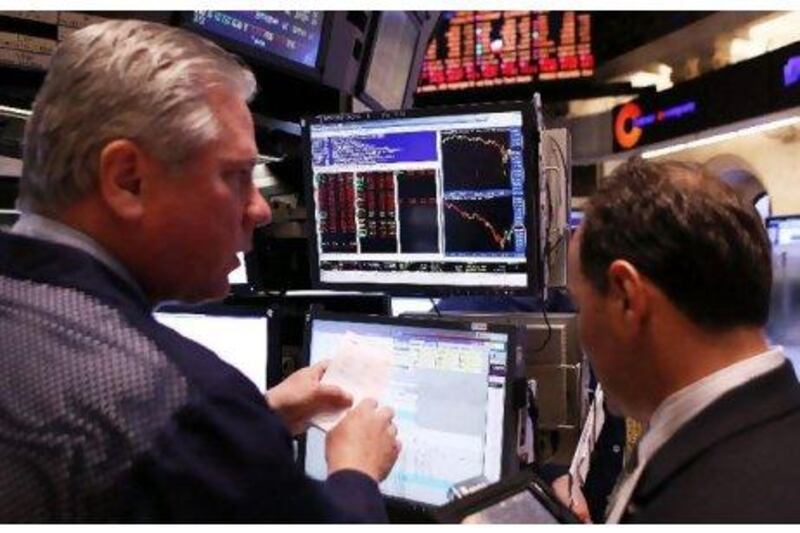Two weeks ago, my Satwa Row tailor put an extra three quarters of an inch around the waistband of my trousers as I prepared myself for a night out at the Christina Noble Charity Ball.
Before I could grace the dance floor with my newly learned and nifty moves, Christina Noble herself gave an impassioned speech about the desperate lives of the orphaned children that her charity supported in Mongolia and other parts of the world.
Looking prosperous in my new suit, her appeal had the desired effect and I forked out another Dh100 on an extra strip of raffle tickets. Appealing to an audience such as this is a legitimate way to raise funds and I was expecting it. The MC was also successful in persuading individual members of the audience with his jokes to bid twice as much as they had intended to pay for something, I am sure, they did not need.
I was impressed and wondered if I could use similar techniques to persuade my clients to invest more in their pension plans or to take a more pragmatic view about investment performance.
A client telephoned me recently to complain about the performance of her investment portfolio. She had invested a lump sum of US$30,000 (Dh110,187) in July 2001 and it had grown to only $33,301 by this month, representing a growth of only 11 per cent in more than nine years.
On the face of it, money in a deposit account would have done better. But this is a fallacious comparison. The fact is that her investment had been exposed to US and global stock markets and had the potential to rise much faster than inflation, whereas money in a deposit account will never have the potential to beat inflation.
The reason her portfolio did not grow as much as she'd hoped was that equity markets failed to perform over that period. In fact, they declined for the first two years as the full effects of the dotcom crisis panned out.
When equity markets bottomed out in March 2003, her investment had fallen to $24,084 - a decline of 19.7 per cent. This was not good, but it could have been worse. As a US dollar growth-oriented investor, we decided nine years ago to benchmark the performance of her investment against that of the S&P 500 Index. This is an index that mirrors the stock-market performance of the largest 500 companies in the US.
Over the same time period, this index fell by 30.6 per cent. Her portfolio had outperformed this by almost 11 per cent. Yes, she had lost value in absolute terms, but against the benchmark, the manager of her portfolio - in this case, me - had done good.
Over the course of the next few years, as a bull market developed, her portfolio rose to a maximum value of $42,624 , corresponding to a massive 42.1 per cent growth on the original investment.
I received no telephone call from the client congratulating me on my fine portfolio management skills because, as is commonly known, advisers are only responsible for losses and should be abused whenever this occurs.
Gains, on the other hand, occur because equity markets rise and have nothing to do with the adviser's skills. If you detect a sense of "peevement" (is there such a word?), then you would be right.
The correct way to judge an adviser is against the benchmark. And when the S&P 500 Index peaked in October 2007, it had grown only 28.9 per cent since the original investment was made. The nifty dancer had outperformed it by 13.4 per cent and is still waiting for the telephone call. An important question to ask is: "How did I achieve this outperformance and did I take excessive and inappropriate risks?" Although it is important to look for growth, it is even more important to ensure that the risk in the portfolio is appropriate to the client's risk tolerance level.
In this case, the outperformance occurred because the portfolio had a small exposure to world equity markets and to bond markets. This exposure was about 30 per cent and was sufficient to produce extra gain without too much exposure to extra risk.
The performance would have been much higher had I introduced more exposure to Asian and emerging markets. This strategy has paid off handsomely but, throughout the nine-year period, portfolios were exposed to higher volatility. This is the main lesson: if you want higher-than-average growth, you have to take higher-than-average risk and learn to live with higher-than-average volatility.
My client in this column suffered because her single investment was made when equity markets were high. If she had invested the money in 36 equal instalments over a three-year period, she would have done much better. I have calculated that using this strategy on investing in the S&P 500 Index over three years would have yielded a final value, today, of $36,140, which compares with her single premium investment that would have grown to only $30,570. If you are concerned about the possibility of falling markets, then spread your investment over time. As you can see, I failed to employ the humorous approach of the MC, but sometimes a logical argument is more appropriate.
Bill Davey is a financial adviser at Mondial-Dubai. If you have any questions on this article or any other financial matter, you can contact him at bill.davey@mondialdubai.com





